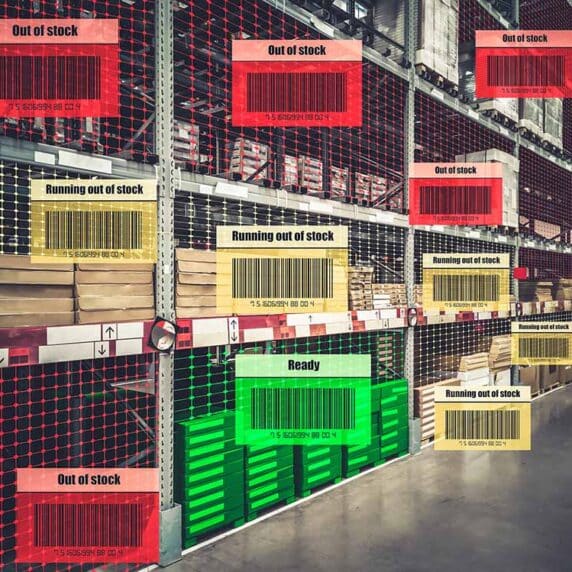Probabilistic Demand Forecasting: Revolutionizing Supply Chains
At ToolsGroup, we’ve long championed probabilistic demand forecasting (also known as stochastic forecasting) as the cornerstone of effective supply chain management software. This advanced approach transforms demand planning from merely “good” to truly “exceptional,” providing businesses with a competitive edge in today’s volatile markets.
The Limitations of Traditional Single-Number Forecasting
There are fundamentally two approaches to prediction in supply planning:
The first is the traditional method of predicting one specific outcome. Like betting that a champion racehorse will win a specific race, this “single-number” forecast assumes one definitive result.
In conventional supply chain planning, planners using basic tools (typically spreadsheets or legacy systems) forecast just one number for each item. This approach can suffice for highly predictable, commodity products with stable demand patterns—like consistently selling 100 standard phone chargers weekly for years.
However, most modern product portfolios aren’t this predictable. Even the most established products face numerous variables affecting their actual demand:
- Sudden market shifts
- Competitor actions
- Unexpected supply disruptions
- Changing consumer preferences
- Pricing fluctuations
- Extreme weather events
The Power of Probabilistic Demand Forecasting Software
Modern demand forecasting software operates on a more sophisticated principle, similar to how professional gamblers analyze a range of possible outcomes and hedge their bets accordingly.
In advanced supply chain management systems, machine learning algorithms analyze multiple demand variables to calculate the probabilities of a range of possible outcomes. This probabilistic approach delivers:
- Superior accuracy for complex demand patterns where traditional forecasting fails
- Effective planning for new product introductions with limited historical data
- Better handling of seasonal fluctuations and promotional impacts
- Granular visibility into daily demand variations by location
Even when aggregate monthly demand appears stable, daily demand by location typically shows significant volatility. In modern distribution networks, meeting service levels requires getting precisely the right inventory to the right locations at the right time.
A probabilistic forecast built into your demand planning software addresses this challenge by:
- Providing the most likely outcome plus its probability
- Showing the full spectrum of alternative scenarios with their respective probabilities
- Quantifying demand volatility, which critically impacts service levels
- Enabling risk-based inventory decisions across your network

Business Benefits of Probabilistic Demand Planning
Just as betting on predictable favorites offers limited returns, selling only predictable commodity products typically yields lower margins. Today’s most successful businesses derive significant profit from “long-tail” products that traditional forecasting struggles to manage.
Implementing advanced demand forecasting software with probabilistic capabilities delivers measurable advantages:
- Reduced inventory costs (20-30% on average) while maintaining or improving service levels
- Improved cash flow through optimized working capital allocation
- Higher service levels (up to 99.9% product availability)
- Decreased waste (10-30%) and lower obsolescence costs
- Enhanced planner productivity (40-90% reduction in manual forecasting work)
- Greater supply chain resilience during disruptions
Perhaps most importantly, probabilistic demand planning restores confidence in the forecasting process. When plans are based on inaccurate assumptions about demand uncertainty, service targets are missed and supply chains default to reactive firefighting. This erodes trust, causing planners to overcompensate with excessive safety stock—leading to unnecessary costs, waste, and obsolescence.

Implementing Probabilistic Forecasting in Your Supply Chain
Modern supply chain management software incorporates probabilistic modeling as a core function, not just an add-on feature. When evaluating solutions, look for:
- Native probabilistic calculation engines
- Machine learning capabilities that improve over time
- Ability to incorporate both internal and external data sources
- Automated parameter selection that reduces planner workload
- Configurable service-level targets based on business priorities
- Clear visualization of probability distributions
In today’s uncertain business environment, probabilistic demand forecasting isn’t just a statistical method—it’s the foundation of supply chain excellence. By enabling more accurate inventory decisions across your entire product portfolio, this approach provides the sustainable competitive advantage needed to elevate your supply chain performance from adequate to exceptional.





